Il Cinema Ritrovato 2023 presents a career retrospective, curated by Ehsan Khoshbakht, that showcases Mamoulian’s work from his only silent film, to the early sound period, to his final musical, in colour and CinemaScope.
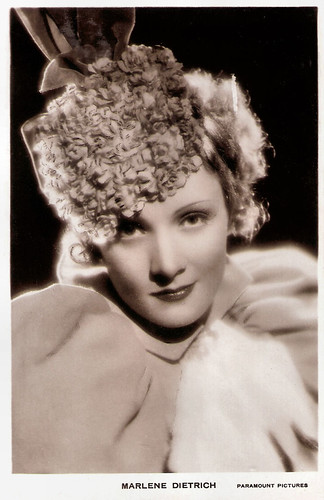
British postcard. Photo: Paramount Pictures. Marlene Dietrich in The Song of Songs (Rouben Mamoulian, 1933).

German postcard by Ross Verlag, no. 8435/1, 1933-1934. Photo: Metro-Goldwyn-Mayer. Greta Garbo in Queen Christina (Rouben Mamoulian, 1933).

French postcard by EDUG, no. 1085. Photo: Paramount. Maurice Chevalier dressed as 'apache' at the costumed ball in Love Me Tonight (Rouben Mamoulian, 1932).
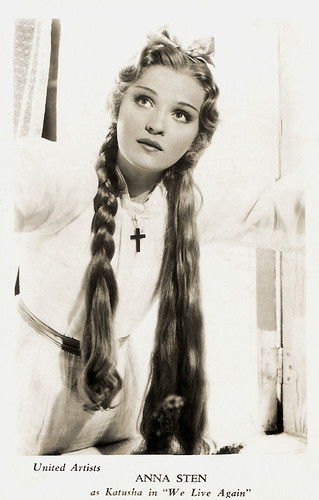
British card. Photo: United Artists. Anna Sten in We Live Again (Rouben Mamoulian, 1934), an adaptation of Leo Tolstoy's 1899 novel 'Resurrection'.

French postcard by Editions EC, Paris, no. 504. Photo: RKO. Miriam Hopkins in Becky Sharp (Rouben Mamoulian, 1935).

German postcard by Kolibri-Verlag. Photo: Twentieth Century Fox. Tyrone Power in Blood and Sand (Rouben Mamoulian, 1941).
Revolutionary use of interior dialogue
Rouben Zachary Mamoulian (Armenian: Ռուբէն Մամուլեան) was born in Tiflis, Russian Empire (now Tbilisi, Republic of Georgia), in 1897. His mother, Virginia (née Kalantarian), was a director of the Armenian theatre, and his father, Zachary Mamoulian, was a bank president. Mamoulian spent part of his childhood in Paris. He studied criminology at the University of Moscow and later, he studied acting, dramaturgy and directing with Constantin Stanislavsky and Yevgeny Vakhtangov. In 1918 he founded his own stage in Tbilisi. In 1920, he went on a tour of England and decided to stay there. He spent three years in London taking acting and drama classes and in 1922 he made his debut as a stage director.
Mamoulian was brought to the United States in 1923 by Vladimir Rosing to teach at the Eastman School of Music, the music school of the University of Rochester. There he was involved in directing opera and theatre. In 1925, Mamoulian was head of the School of Drama, where Martha Graham was working at the time. Among other performances, together they produced a short, two-colour film titled The Flute of Krishna, featuring Eastman students. By 1926 he was teaching at the New York Theatre Guild, where he staged a critically admired performance of 'Porgy and Bess' in 1927. In 1929 he took over the direction of the early sound film Applause (1929), which was filmed at Paramount's Astoria Studios in New York. The musical starred Helen Morgan in the leading role. The film was highly praised by critics for its innovative use of sound and dialogue to dramatise the story. In 1931 he went to Hollywood with a contract at Paramount to make City Streets (1931) starring Gary Cooper and Sylvia Sidney. German Wikipedia: "The camerawork of this crime film is fluid, almost as if shot with a handheld camera, and the use of interior dialogue is revolutionary for the time".
Mamoulian broke through with the drama Dr Jekyll and Mr Hyde (1931) based on the novel 'The Strange Case of Dr Jekyll and Mr Hyde' (1886) by Scottish author Robert Louis Stevenson. Fredric March won an Oscar for Best Actor in a Leading Role as Dr. Henry Jekyll and Miriam Hopkins as Ivy Pearson. The scenes between March and Hopkins, balancing violence and sexuality, made Mamoulian the most-talked-about director of the year. Another artistic and financial success was the slightly frivolous social comedy Love Me Tonight (1932) with Maurice Chevalier and Jeanette MacDonald. Some critics praised Mamoulian for beating Ernst Lubitsch on his own ground. The studio entrusted Mamoulian with directing Marlene Dietrich in Song of Songs (1933). Dietrich's career was in crisis and this would be her first American film without the participation of Josef von Sternberg. Song of Songs tells the story of a peasant girl who, after many erotic adventures, finally finds true happiness. The story had already been filmed a few years earlier as a silent movie with Pola Negri. Most critics thought the studio should have left it at that.
Mamoulian's prestige was so great that Louis B. Mayer personally lobbied to lend him to MGM for Greta Garbo's comeback after an eighteen-month absence from the screen. Queen Christine (1933) was a very vague biopic of Queen Christine of Sweden, with only a rudimentary reference to the actual events that led to the Queen's abdication. Produced at great expense, it contains two of Mamoulian's most famous scenes: the "I remember room" sequence, in which Garbo moves silently through a room to the beat of a metronome, touching all the objects to preserve the magic of the moment. And the final scene, in which only the actress' completely blank, expressionless face appears on the screen. With a profit of $650,000, Queen Christine was instrumental in getting MGM solvent through the film industry's toughest year ever economically.
Producer Samuel Goldwyn hired Mamoulian the following year to turn his protégée Anna Sten into Hollywood's biggest dramatic star. We Live Again, loosely based on Tolstoy's tale 'Resurrection' was disappointing artistically and financially. The next film, the first feature-length film in three-strip Technicolor film, Becky Sharp, the adaptation of the novel 'Vanity Fair' (1847-1848) by William Makepeace Thackeray, was also technically innovative and stylistic, but financially and artistically a flop. The Duchess's Ball before the Battle of Waterloo became proof that the deliberate use of colour could heighten the dramaturgy of scenes. Over the next few years, Mamoulian made a number of films in a wide variety of genres, but none of them could match the quality of the early 1930s.
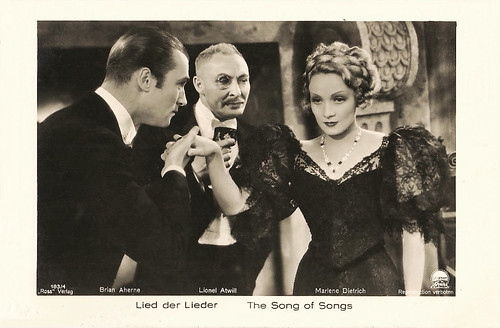
German postcard by Ross Verlag, no. 183/4. Photo: Paramount. Brian Aherne (Richard), Lionel Atwill (Baron von Merzbach) and Marlene Dietrich (Lily) in The Song of Songs (Rouben Mamoulian, 1933). Dietrich is a naive peasant girl who models (naked) for a sculptor and falls in love with him. A rich baron, the sculptor's client, presses the artist to leave the girl to him. The baron turns her into a lady, but, incidentally, in a world-wise woman too. He invites the sculptor to show Lily's metamorphosis. Lily is terribly hurt by both men.

German postcard by Ross Verlag, no. 7789/2, 1932-1933. Photo: Paramount. Marlene Dietrich in Song of Songs (Rouben Mamoulian, 1933).

German postcard by Ross Verlag, no. 194/2. Photo: Metro-Goldwyn-Mayer (MGM). Greta Garbo in Queen Christina (Rouben Mamoulian, 1933).

German postcard by Ross Verlag, no. 194/3. Photo: MGM. Greta Garbo and John Gilbert in Queen Christina (Rouben Mamoulian, 1933).
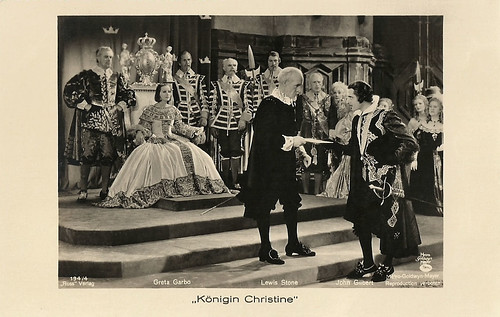
German postcard by Ross Verlag, no. 194/4. Photo: Metro-Goldwyn-Mayer. Greta Garbo, Lewis Stone and John Gilbert in Queen Christina (Rouben Mamoulian, 1933).
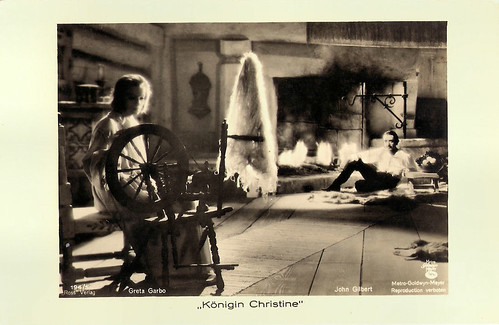
German postcard by Ross Verlag, no. 194/5. Photo: MGM. Greta Garbo and John Gilbert in Queen Christina (Rouben Mamoulian, 1933).
Problems with the studio bosses
Rouben Mamoulian directed Tyrone Power in the cloak-and-dagger epic In the Sign of Zorro (1940) also starring Linda Darnell and Basil Rathbone. The film was characterised by elegant camera work and fluid staging. It was followed by Blood and Sand (1941), about bullfighting, shot again with Power now opposite Rita Hayworth. Blood and Sand was filmed in Technicolor, and used colour schemes based on the work of Spanish artists such as Francisco Goya, Diego Velázquez and El Greco.
After World War II, Rouben Mamoulian's films included the musicals Summer Holiday (1948) with Mickey Rooney and Gloria DeHaven and Silk Stockings (1957). Summer Holiday was based on the play 'Ah, Wilderness!' (1933) by American author Eugene O'Neill. Both musicals are particularly noteworthy for their incorporation of song and dance interludes into the staging of the action.
Silk Stockings (1957), starring Fred Astaire and Cyd Charisse, is based on the 1955 Broadway musical of the same name by Cole Porter. This musical was based on Ernst Lubitsch's film Ninotchka (1939) with Greta Garbo. Silk Stockings was a success, bringing in 4.4 million worldwide. The film was nominated for two Golden Globes (best film and best actress). Silk Stockings (1957) marked Fred Astaire's provisional last appearance as a dancer in a musical and his last film for MGM. It was also the last MGM film musical to be shot in its entirety at Culver City's MGM studios and it was Rouben Mamoulian's last film.
Mamoulian made just 16 films in 29 years. He often had problems with the studio bosses. In 1944, for example, he was replaced by Otto Preminger in the middle of filming Laura. In 1958, he also lost the direction of Porgy and Bess to Preminger. His involvement in 1959 in the mammoth venture Cleopatra (1961), with Elizabeth Taylor as the Egyptian queen, also ended in his sacking. The finished film, which was to see many directorial changes, contains a good ten-minute segment still directed by Mamoulian.
Over the years, Mamoulian returned again and again to Broadway, where he was responsible for some of the most spectacular productions ever. In particular, his production of 'Oklahoma!' in 1943, with Agnes de Mille as the choreographer in charge, revolutionised the staging of musicals overnight. The play ran for 2,212 performances between 1943 and 1948. 'Carousel' from 1945 was also a great artistic success. In 1964 he wrote the children's book 'Abigayil' and in 1965 'Hamlet Revised and Interpreted'. In 1982, the Directors Guild of America presented him with the D.W. Griffith Award. In 1987, Rouben Mamoulian passed away at the Motion Picture & Television Country House and Hospital of natural causes at the age of 90 in Woodland Hills, California. He had been married to Azida Newman since 1945.
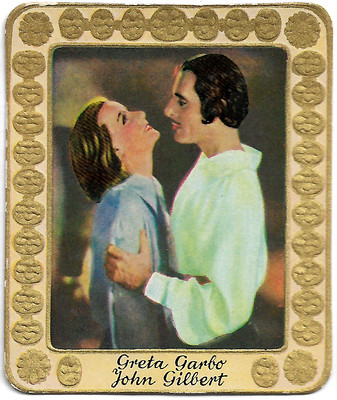
German collectors card in the Moderne Schönheitsgalerie by Ross Verlag for Edelzigarette Kurmark, series 2, no. 47 (of 300). Photo: Metro-Goldwyn-Mayer. Greta Garbo and John Gilbert in Queen Christina (Rouben Mamoulian, 1933).
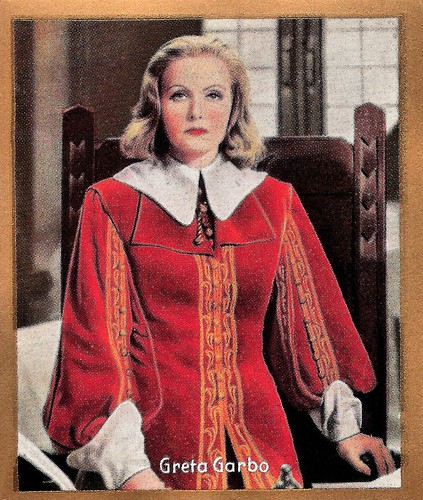
German cigarette card in the series Unsere Bunten Filmbilder by Ross Verlag for Cigarettenfabrik Josetti, Berlin, no. 23. Photo: Metro-Goldwyn-Mayer. Greta Garbo in Queen Christina (Rouben Mamoulian, 1933).

British postcard, no. 34. Photo: Paramount Pictures. Marlene Dietrich in the American pre-Code movie The Song of Songs (Rouben Mamoulian, 1932), based on 'Das hohe Lied' by German author Hermann Sudermann.
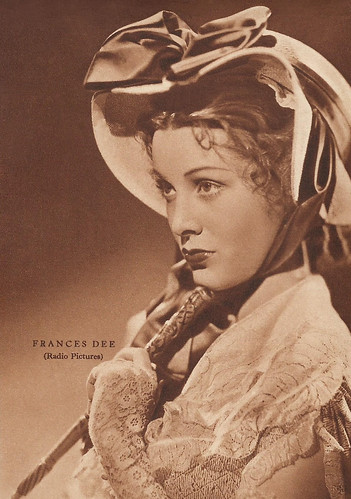
Italian postcard by Rizzoli & C. Milano, 1938. Photo: Radio Pictures (RKO). Frances Dee in Becky Sharp (Rouben Mamoulian, 1935).
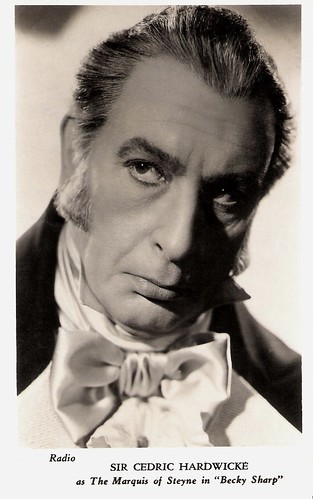
British postcard. Photo: Radio. Cedric Hardwicke in Becky Sharp (Rouben Mamoulian, 1935).
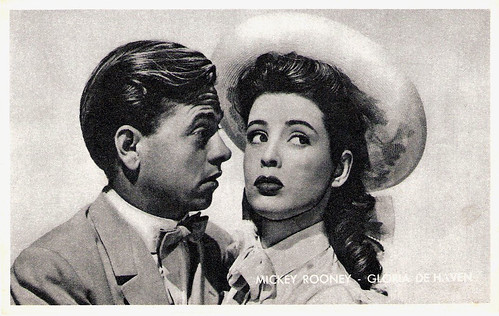
Belgian collectors card by Kwatta, Bois d'Haine, no. C. 172. Photo: MGM. Mickey Rooney and Gloria DeHaven in Summer Holiday (Rouben Mamoulian, 1948).

French postcard in the Collection Cinéstar. Fred Astaire and Cyd Charisse in Silk Stockings (Rouben Mamoulian, 1957).
Sources: Il Cinema Ritrovato, Wikipedia (Dutch, German and English) and IMDb.
No comments:
Post a Comment